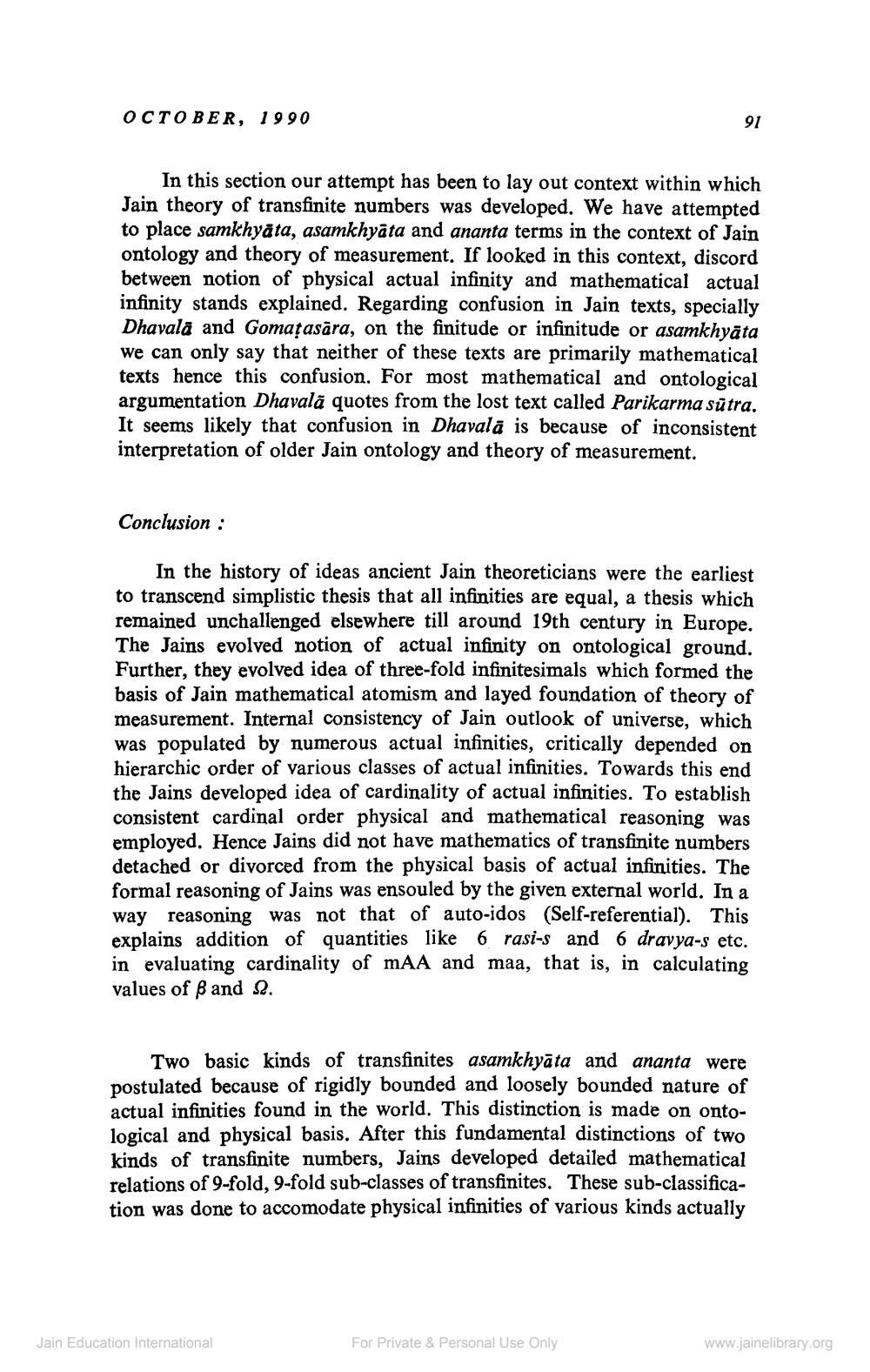________________
OCTOBER, 1990
In this section our attempt has been to lay out context within which Jain theory of transfinite numbers was developed. We have attempted to place samkhyāta, asamkhyāta and ananta terms in the context of Jain ontology and theory of measurement. If looked in this context, discord between notion of physical actual infinity and mathematical actual infinity stands explained. Regarding confusion in Jain texts, specially Dhavala and Gomaṭasara, on the finitude or infinitude or asamkhyāta we can only say that neither of these texts are primarily mathematical texts hence this confusion. For most mathematical and ontological argumentation Dhavalã quotes from the lost text called Parikarma sūtra. It seems likely that confusion in Dhavala is because of inconsistent interpretation of older Jain ontology and theory of measurement.
Conclusion:
91
In the history of ideas ancient Jain theoreticians were the earliest to transcend simplistic thesis that all infinities are equal, a thesis which remained unchallenged elsewhere till around 19th century in Europe. The Jains evolved notion of actual infinity on ontological ground. Further, they evolved idea of three-fold infinitesimals which formed the basis of Jain mathematical atomism and layed foundation of theory of measurement. Internal consistency of Jain outlook of universe, which was populated by numerous actual infinities, critically depended on hierarchic order of various classes of actual infinities. Towards this end the Jains developed idea of cardinality of actual infinities. To establish consistent cardinal order physical and mathematical reasoning was employed. Hence Jains did not have mathematics of transfinite numbers detached or divorced from the physical basis of actual infinities. The formal reasoning of Jains was ensouled by the given external world. In a way reasoning was not that of auto-idos (Self-referential). This explains addition of quantities like 6 rasi-s and 6 dravya-s etc. in evaluating cardinality of mAA and maa, that is, in calculating values of 8 and 2.
Two basic kinds of transfinites asamkhyāta and ananta were postulated because of rigidly bounded and loosely bounded nature of actual infinities found in the world. This distinction is made on ontological and physical basis. After this fundamental distinctions of two kinds of transfinite numbers, Jains developed detailed mathematical relations of 9-fold, 9-fold sub-classes of transfinites. These sub-classification was done to accomodate physical infinities of various kinds actually
Jain Education International
For Private & Personal Use Only
www.jainelibrary.org




